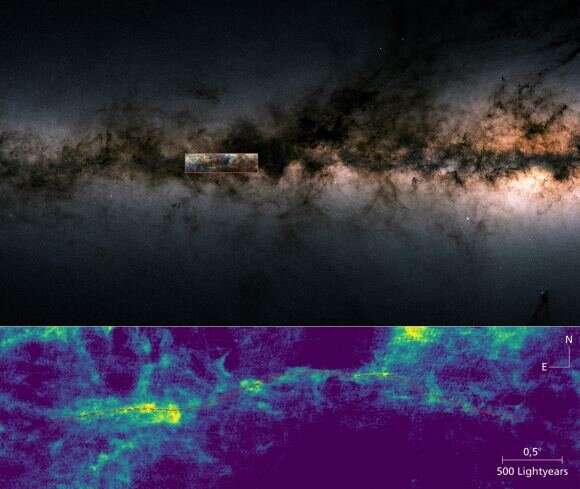A filament of hydrogen 3,900 light-years long
Roughly 13.8 billion years ago, our universe was born in a massive explosion that gave rise to the first subatomic particles and the laws of physics as we know them.
About 370,000 years later, hydrogen had formed, the building block of stars, which fuse hydrogen and helium in their interiors to create all the heavier elements.
While hydrogen remains the most pervasive element in the universe, it can be difficult to detect individual clouds of hydrogen gas in the interstellar medium (ISM).
Source
Roughly 13.8 billion years ago, our universe was born in a massive explosion that gave rise to the first subatomic particles and the laws of physics as we know them.
About 370,000 years later, hydrogen had formed, the building block of stars, which fuse hydrogen and helium in their interiors to create all the heavier elements.
While hydrogen remains the most pervasive element in the universe, it can be difficult to detect individual clouds of hydrogen gas in the interstellar medium (ISM).
Source






















